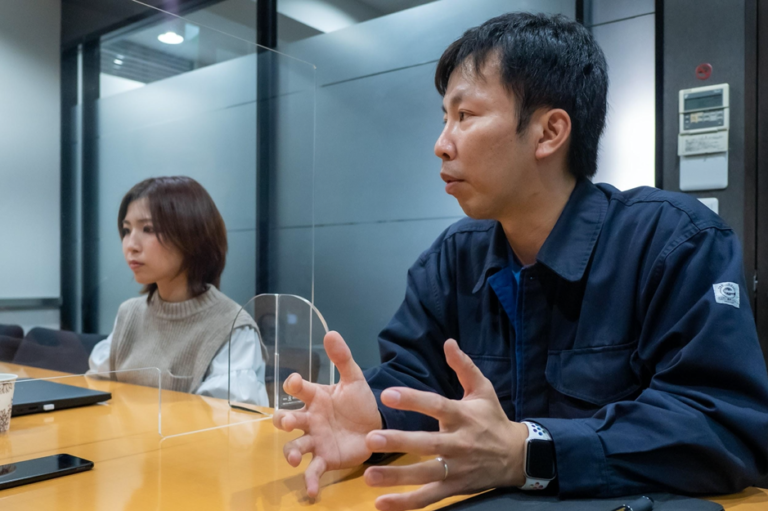The THETA 360-degree camera can be used in a variety of situations, such as travel and capturing memories, but it’s also useful for professional work. We interviewed architect and THETA user Waka Kimizuka about how he gets the most out of the flagship model THETA Z1 in his work.
▼Try moving the image around in any direction!▼
Please tell us how you use THETA in your architectural design work.
I use it in many situations such as new building construction, renovation, and earthquake resistance diagnosis.
For instance, when I get a design offer for a new building, I use THETA to survey the plot of land. In addition to checking the land itself, if we are planning a building with multiple floors, for example, we can visualize things from a higher position. With THETA attached to a 7-8m pole we can shoot from the height of the future windows and get a better idea of the view, the angle of the sun, the position of the windows in the vicinity, and the surrounding trees.

Shooting the surrounding environment according to the height of the building
The photo above shows me shooting with a DSLR mounted on the pole, but these days I shoot with THETA in the same way. Unlike a heavy DSLR, THETA makes it easier because it does not bend the pole even when it’s fully extended, and on top of that I can do it in one shot.
Also, during construction, with THETA I can record a 360-degree image of the interior of the structure, even parts that will not be visible from the outside when the house is completed, such as the frame and wiring in the house. It is very convenient because I can double-check the structural columns and frame after the fact in the 360-degree image, especially in the case that the client requests some changes or additions after completion.
Taken with THETA Z1: Shooting during construction to document the wiring and structural elements that will be hidden when completed.

How do you use THETA in situations besides construction?
I sometimes do seismic assessment of existing buildings. In the case that there are no drawings of the building, I need to create a schematic first. However, I only measure roughly on site, and after that put THETA in the middle of each room and shoot a 360 degree image. Then later I make a detailed drawing while looking at the image. THETA images are also very useful as a tool for review.
In general, it’s popular to measure everything and draw on site. I used to do that in the past, but I think that using THETA can make the work much more efficient.
Taken with THETA First model: Investigation inside the ceiling of a renovated house
Also, when I have renovation work, I go into the attic or under the floor to check the structure of the building and see if there are any columns that can be removed. And then I shoot with THETA on a monopod or tripod for later confirmation. It is tricky to shoot in these spaces because they are dark , but the THETA Z1 is great as it can shoot with RAW and produces images with less noise.
Do you ever show or provide the THETA images to your customers after the project is over?
Recently, Facebook and LINE also support 360-degree photos, so I often use it for easy sharing of 360-degree images.

How do you like THETA Z1?
It’s very easy to use. I like that there is a display on the main body, and above all, the image quality is fantastic. Whether I use it at work or leisure, I always shoot in RAW and edit with Lightroom. For my work in particular, I usually brighten up the shadows. It’s hard to compare THETA with a normal DSLR when it comes to resolution, though I would say THETA’s killer feature is that it can shoot so quickly. And for me the best thing about the Z1 is that it can shoot in RAW.

Thank you for your story. I hope you get the most out of THETA in your work and for leisure as well!
Please visit here theta360.com to learn more about the product .





.jpg)


.svg)




